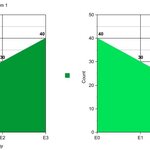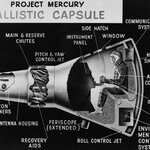Aerospace

I've long said that what NASA needs is not a James Webb Space Telescope but an actual James Webb for the 21st century.
Webb, if you are not familiar with NASA lore, was a bold leader rather than a bureaucrat tasked with perpetuating funding, and it was due to his leadership that NASA launched 75 missions into space, including putting a man on the Moon.
The telescope named after him is instead very much a product of modern NASA - its benefit and time to completion were overestimated and its funding requirement underestimated. The belief in much of modern Big Science is once you get…

Calliope, like any Low Earth Orbit satellite (LEO), is going up to, well, LEO. Space weather-- radiation and energetic particles emitted from an active Sun-- can damage satellites. This region of space is partially protected from the worst effects of space weather by the Earth's ionosphere, but it is an active and threatening place.
If space wasn't active, there wouldn't be any point in sending up Calliope to measure it. However, we'd prefer to keep the physical damage to the electronics to a minimum. The primary source of damage due to solar activity is due to highly…

Into every satellite a little grunt work must fall. Today you get to read the exceedingly boring but entirely real details of a typical week of satellite construction and project management.
Outreach Work
The flight pins and first mission patches have arrived for the 76 exceptional contributors to Calliope! This week I will be packaging up approximately 76 bundles to mail out. Oh, and I have to write this week's project update-- which you're reading now.
Assembly Work
To build the satellite, I have to solder electronics parts onto a PCB board. This is a straightforward…

Fellow Tubesat pioneer Wesley Faler of Fluid&Reason has calculated power curves we can expect for our orbiting picosatellites. His summarized estimate is that 6-cell solar panel in a sun-synchronous polar orbit with perfect positioning can expect to produce 0.5 Watts. This sets our ultimate power budget for the satellite, and helps us choose appropriate instrumentation and control schemes.
His simulation and calculation, running in full about 5 pages, is an excellent breakdown of the issues involved. His own note on it mentions "the calculations have been updated to use…

'Project Calliope' will have a nearly circular polar low-earth orbit... but what does that actually mean? Here's a brief mini course in orbital mechanics.
Any orbit requires 6 elements to specify the position and motion fully. Since we live in 3-D space, it's equivalent to 3 spatial dimensions and 3 velocities. You could use (x,y,z) for the position and (vx,vy,vz) for the velocities. You could use spherical coordinates, or Euler angles. All of those give you, at any instant, the full position and motion in 3D of the satellite at a specific instance in time.
A…

50 years ago today Alan Shepard became the first American into space, launching at just after 9AM from the Space Coast of Florida and finishing just over 15 minutes and 117 miles up later.
The most famous book (and movie) about the early days of NASA is "The Right Stuff" and it is surprisingly faithful in its telling. Alan Shepard did pee in his suit and then say, after three hours of being immobilized in a tiny capsule, "Why don't you just fix your little problem and light this candle?" but he was also a guy who said, "You know, being a test pilot isn't always the…

50 years ago today, Alan Shepard journeyed into the Final Frontier and became the first American in space, following USSR cosmonaut Yuri Gagarin by a period of weeks.
Here is a look at some of details from that period and, when you are done, you can see our interview with Arthur Cohen, one of the lead engineers for the Mercury Program from 1959-1963.
Alan Shepard's Freedom 7 manned space flight details
Rocket: Redstone, MR-7Spacecraft No. 7Launch: 05/05/1961, 9:34:00 a.m. ESTLanding: 05/05/1961, 9:49:28 a.m. ESTDuration: 15 min, 28 secAltitude: 116.5 statute milesDistance: 303 statute…
I am launching my Project Calliope picosatellite on an Interorbital Systems (IOS) rocket. IOS invented the Tubesat format. What if Interorbital fails-- their rockets all blow up, they run out of money, they decide to do interpretive dance instead of rockets? Is Calliope dead?
This is especially important now that I'm fundraising. Bear in mind the fundraising gives you actual cool stuff-- mission patches and flight pins. Stuff is nice. Stuff is tangible. (Buy Calliope stuff!) The flight patches will remind you that you supported an…

Gravity does funny things. While the Earth looks rather round in pictures from space, the distortions that would have to occur in order to have uniform gravity everywhere would make it look more like...a potato, or a squashed basketball.
ESA's GOCE satellite has gathered enough data to map Earth's gravity with unrivaled precision, and so we get the most accurate model of the 'geoid' ever produced. The geoid is the surface of an ideal global ocean in the absence of tides and currents, shaped only by gravity. It is a crucial reference for measuring ocean circulation, sea-level…

Back before I became a ham-licensed PCB-ordering flux-soldering basement-building boutique satellite maker, it all started with an idea-- actually, with a column on my other ID here at Science 2.0. And since I'm still cooking with a 101-degree fever, I figure I'll go for that way-back-machine wavy effect and let you all read where it all began.
Alex